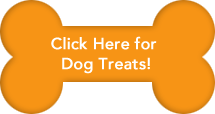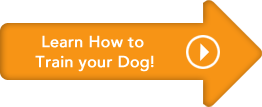There is a wealth of information and advertising happening on the internet. One only need do a simple Google search and they are bombarded with a barrage of goods and services offered by many, many businesses.
As internet searches have become the primary way people locate goods or services they are looking for; it’s become paramount that your business sites stand out from those of your competitors and, deliver conversion rates higher than theirs. This is where call to actions come in.
A call to action is a ‚”button‚” or banner placed on your website which urges a potential client or customer to do something ‚- whether it’s to fill out a form, buy a product or download and eBook – call to actions lead to conversions.
Conversions are the technical term for leads generated from users clicking on your call to action. These conversions lead, hopefully, to sales. To generate these conversions to sales, your call to action needs to not only catch the eye but compel the user to click them.
Making your call to action pay is one of the most important things you should be focusing on when designing your business’ website. Some key points to follow during your web design for making your call to action it’s most effective follow below:
Recognizing Need
 The first step to take when designing your call to action or CTA, is to help your readers recognize the need to click on it. Define the problem or need and design your text and graphics around the idea that if users click on your call to action, the problem will be resolved.
The first step to take when designing your call to action or CTA, is to help your readers recognize the need to click on it. Define the problem or need and design your text and graphics around the idea that if users click on your call to action, the problem will be resolved.
For example: you’ve written an eBook on dog training you are trying to sell. Start with some text outlining common behavior problems and design your call to action so that users believe all the answers to their training problems will be solved by clicking your call to action.
Placement
 The placement of your call to action is quite important. Typically CTAs are placed on the left side near the top or midline.
The placement of your call to action is quite important. Typically CTAs are placed on the left side near the top or midline.
In the English language, we read left to right and top to bottom. You wouldn’t want to place your CTA too close to the bottom of your landing page because often visitors to your site will not read all the way down your page and if they do, you should try to avoid having them scroll back up to find it again. This is a key lesson in web design.
Warm vs Cold Colors
 Colors such as red, orange and yellow denote warmth and give an illusion that they are closer than they really are while colors such as blues and greens denote cold and appear more distant.
Colors such as red, orange and yellow denote warmth and give an illusion that they are closer than they really are while colors such as blues and greens denote cold and appear more distant.
 Studies have shown users will be more likely to click a warmer color than a colder one so use the warmer colors whenever you can.
Studies have shown users will be more likely to click a warmer color than a colder one so use the warmer colors whenever you can.
Contrasting Colors
 Getting your call to action noticed is half the battle but using contrasting colors aid in this.
Getting your call to action noticed is half the battle but using contrasting colors aid in this.
Put your colder blues and greens in the background graphics and use the warmer colors for your call to action. The contrast between the colorings will help your CTA to further stand out.
Compelling Incentives and Social Proof
When designing your CTAs another great idea is to include an incentive or show proof that others have enjoyed the product as well.
 An incentive is something you would include in your CTA text or graphic such as ‚”50% off!‚” or ‚”Sign Up for Free Today!‚” Make your users think they are getting a deal of some kind when they click your CTA.
An incentive is something you would include in your CTA text or graphic such as ‚”50% off!‚” or ‚”Sign Up for Free Today!‚” Make your users think they are getting a deal of some kind when they click your CTA.
Social proof or influence is akin to peer pressure. There have been many studies in advertising indicating the value of social pressure. By including button which displays your pages Facebook ‚”likes‚” and other social media shares, you create a sense that many people love this product and so should your user.
Showing your Product
 Designing your call to action in such a way that it highlights your product or service in the actual call to action is brilliant.
Designing your call to action in such a way that it highlights your product or service in the actual call to action is brilliant.
Users get a small taste of what they’re searching for and that small taste will compel them to click your CTA to see more.
Great Text
 As important as placement, great text can mean the difference between a user clicking on your call to action or scrolling past. You want to inform, create a sense of urgency and tease using the least amount of text possible but in such a way that visitors cannot help but click your CTA leading to a conversion and a brand new lead.
As important as placement, great text can mean the difference between a user clicking on your call to action or scrolling past. You want to inform, create a sense of urgency and tease using the least amount of text possible but in such a way that visitors cannot help but click your CTA leading to a conversion and a brand new lead.
Be exciting and urgent but straight to the point without giving everything away at first glance. Your text should clearly show what you want users to do using urgent yet effective language.
Spatial Effect
 White space is important! You need to highlight your call to action in your graphic design by utilizing white space around it.
White space is important! You need to highlight your call to action in your graphic design by utilizing white space around it.
Users will not click your CTA if there are too many things cluttered around it, or it will simply be hidden by the clutter. Set your call to actions apart by surrounding them with an equal amount of white space on all sides so it is set apart from the page but still included.
A Sense of Direction
 Using directional graphics and arrows highlighting your call to action give users a sense of what direction you want them to take.
Using directional graphics and arrows highlighting your call to action give users a sense of what direction you want them to take.
Since a call to action is the first step in getting consumers to take the path you want them to take, you should make use of directional graphics such as arrows or sign shapes in your graphic design and call to action buttons.
The final step in an effective call to action is to give some thought to what happens after a consumer clicks your CTA. If your intention is to gather information, resist the temptation to gather demographics and request only the minimum amount of information needed to follow through with this potential new lead. Consumers are turned off if they have to enter too much information and will likely not finish the fields and you have lost a potential client.
In conclusion, your call to action is the cornerstone to a successful business website. By utilizing the above principles, you will have a CTA that is not only attractive and easily located but one which will generate conversions which will lead to new clients and the success of your business.
